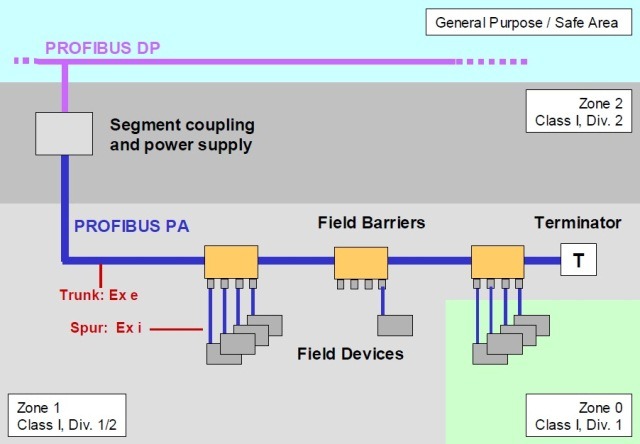Industrial communication protocols, such as PROFIBUS and PROFINET, are based on different physical layers.
PROFIBUS is based on RS-485, which is a common serial communication method. PROFIBUS networks can achieve speeds of up to 12 Mbit/s, though most networks run at 1.5 Mbit/s. The telegram size can be up to 244 bytes, and the address space is limited to 126 devices per network.
PROFIBUS links controllers and control systems with sensors and actuators on the field level (field devices) and enables simultaneous consistent data exchange with superordinate systems. PROFIBUS is the fieldbus-based automation standard of PROFIBUS & PROFINET International (PI).
The most prevalent medium for PROFIBUS transmission is over copper wire, and for this, the easy-to-use and cost-effective RS-485 transmission technology is used. There are some instances under which wired transmission technology reaches its limits, for example, in an environment with heavy interference or bridging long distances. In these cases, optical transmission via fiber cables is available.
PROFIBUS DP vs. PROFIBUS PA: Physical Layer
PROFIBUS has two flavors: PROFIBUS Decentralised Peripherals (DP) and PROFIBUS Process Automation (PA). PROFIBUS PA is proven for use in explosive areas where intrinsic safety is required.
Process Automation environments, while typically requiring slower procedures, might also be characterized by explosive or hazardous environments. In such applications, we use PROFIBUS PA as opposed to PROFIBUS DP. PROFIBUS PA is the same protocol as PROFIBUS DP but based on a different physical layer: Manchester Bus Powered (MBP). MBP only transmits at one speed: 31.25 kbit/s, which is plenty for process applications.
PROFIBUS vs. PROFINET
PI, the creator, maintainer, and promoter of PROFIBUS, has also developed PROFINET, an Ethernet-based automation standard. With over 32.4 million installed nodes (2020), PROFINET is the industry leader among Industrial Ethernet standards.
One of the main differences between PROFIBUS and PROFINET is their physical layer. PROFIBUS is based on RS-485, and PROFINET is based on standard unmodified Ethernet. Employing Ethernet as the physical layer provides many advantages, such as:
- 100 Mbps transmission speeds
- Full-duplex communication
- Flexible topology options
- High bandwidth
- Large message size
- Extensive address space
For a complete overview of PROFINET, you can watch this free on-demand webinar. Also, you can download this White Paper for a detailed comparison between PROFIBUS and PROFINET. They both have similar names and were created by the same organization, but PROFIBUS and PROFINET are very different technologies.


